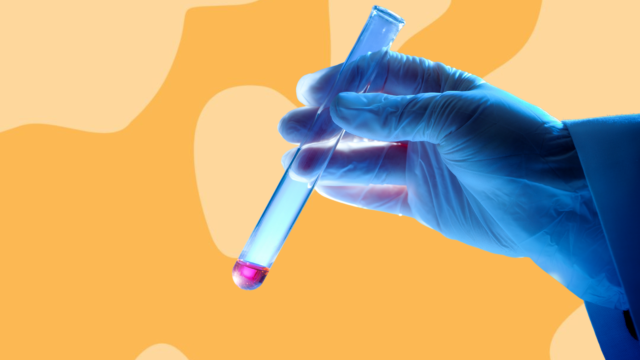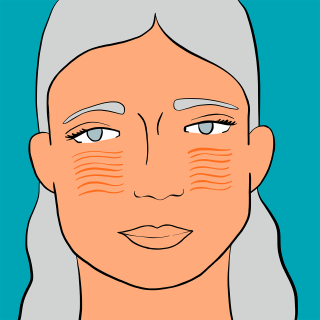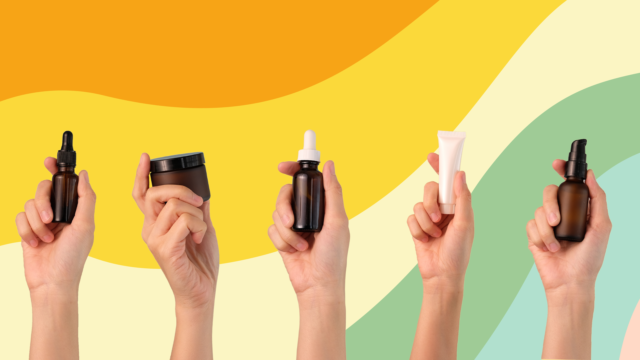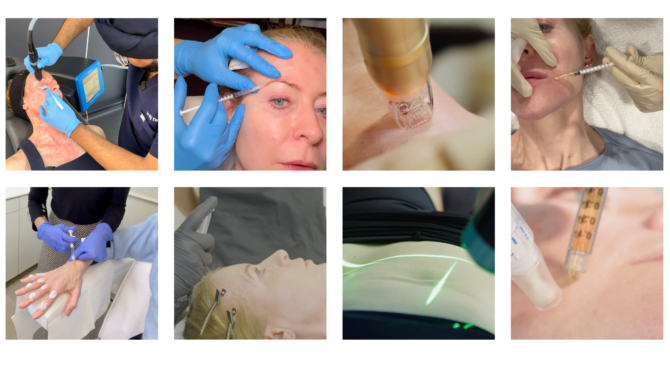How do exosomes work?
Exosomes are tiny, naturally-occurring ‘extracellular vesicles’ which are produced by almost every cell in the body. They’re microscopic – well, nano-sized – little sacs with a lipid (fatty) casing, and they play a crucial role in cell-to-cell communication, shuttling signalling molecules like proteins and genetic material between cells, which influences what’s going on, biologically. So if they find cells that need repairing, they set that repair in motion.
What results can you see from exosomes?
You can expect the type of results that will have people saying ‘you look really well’, rather than ‘what have you had done’. It’s your skin but fresher, brighter and smoother, with specific improvements for uneven tone and texture, acne scars, enlarged pores and wrinkles. That because by ‘waking up’ your skin cell’s natural repair process, exosomes can trigger an increase in collagen and elastin production, improve wound healing and decrease irregular pigment production.
EXO E is a plant-derived exosome brand recommended by Dr Sophie Shotter. Current research suggests that this source can boost elastin production significantly, as well as improving collagen and hyaluronic acid production. You may also see reduced side effects, such as inflammation, from more invasive acne and burn treatments, making it a good combination treatment.
Are exosomes much the same as stem cells?
Not really. While both are known for their ability to rejuvenate the skin, exosomes aren’t living cells (they lack a nucleus), and they can be collected from different sources. Similarly, liposomes which are known for helping deliver ingredients into your skin via encapsulation are much simpler structures, which can only either contain water-loving, or water-hating ingredients.
What are the sources of exosomes that are used for skin rejuvenation?
Human-derived: Most of the latest research on exosomes has been done in Korea, where it is legal to use human-derived exosomes. These exosomes are said to be the most potent, and offer the best results. However, they are also the most controversial, due to laws in the UK about human-derived ingredients (plus a low risk of DNA contamination), and the fact that they are often sourced from babies or young people. (The cells are extracted and then cloned and replicated in the lab to gain the amount of exosomes required). Human-derived exosomes have to be heavily processed in order to be ready for use too, which can mean key components such as vitamins and growth factors have to be added back in.
Animal-derived: Often sourced from colostrum – cattle’s ‘first milk’ – bovine-derived exosomes are an increasing focus within aesthetics as they could provide a fairly effective alternative to human sources. However, the process required to create animal-derived exosomes also destroys some of the important ingredients, such as vitamins and growth factors (so these need to be readded) and there are particular concerns about animal-to-human DNA cross-contamination.
Plant-derived: The legally recognised form of exosomes in the UK. Roses are the most popular plant-derived source, but human cell signalling is a lot more complex than in plants, so multiple plant sources tend to need to be grouped together for the best results. Some new research suggests absorption of the plant-derived exosomes could be higher than other sources.












 The Tweakments Chatbot
The Tweakments Chatbot